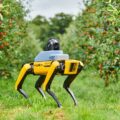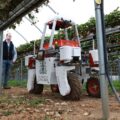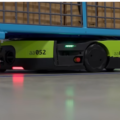Robotics in Agriculture and Farming: An In-Depth Look
Agriculture has always been an essential industry, providing food for the world’s growing population. However, with the rise in population, there has been an increasing demand for food production. This has put pressure on farmers to increase their yields and productivity, which has led to the adoption of technology in the agriculture industry. One such technology that has the potential to revolutionize the industry is robotics.
Robotics in agriculture refers to the use of robots in various aspects of farming, from planting to harvesting. These robots can perform tasks that are either too dangerous, repetitive, or time-consuming for human workers. Robotics in agriculture not only helps to increase efficiency but also helps to reduce labor costs, making farming more profitable.
Benefits of Robotics in Agriculture
- Increased Efficiency: Robots can work 24/7 without taking breaks or getting tired. This means they can complete tasks faster and more efficiently than human workers. This can lead to increased productivity and yields.
- Improved Quality: Robots are designed to be precise, reducing the chances of human error. This can result in a higher quality of products and a waste reduction.
- Reduced Labor Costs: Robots do not require salaries, benefits, or time off. This means that farmers can save on labor costs, which can be a high cost for the agriculture industry.
- Enhanced Safety: Some tasks in agriculture can be dangerous for human workers, such as working with pesticides or operating heavy machinery. Robotics can perform these tasks safely, reducing the risk of injury to workers.
- Climate Adaptability: Robotics can help farmers to adapt to changing climates and weather patterns. For example, robots can be used for precision irrigation, reducing water usage and waste.
Applications of Robotics in Agriculture
- Planting: Robotics can be used for planting seeds, reducing the time and labor required for this task. Robots can be equipped with sensors to ensure the accurate placement of seeds, improving the chances of a successful crop.
- Harvesting: Robotics can be used for harvesting crops, such as fruits and vegetables. Robots can be equipped with cameras and sensors to identify ripe produce, ensuring that only the best quality produce is harvested.
- Livestock Monitoring: Robotics can be used to monitor livestock, such as cows and pigs. Robots can be equipped with sensors to monitor their health and behavior, alerting farmers to any issues that need to be addressed.
- Precision Agriculture: Robotics can be used for precision agriculture, such as precision irrigation and fertilization. Robots can be equipped with sensors to collect data on soil moisture, temperature, and nutrient levels, allowing farmers to make informed decisions on how to manage their crops.
Challenges of Robotics in Agriculture
- Cost: Robotics in agriculture can be expensive, especially for small farmers who may need more resources to invest in this technology.
- Technical Expertise: Farmers may require technical expertise to operate and maintain the robots, which can be a barrier to adoption.
- Infrastructure: Robotics may require specialized infrastructure, such as charging stations, which can be challenging to set up in rural areas.
- Regulation: There may be regulatory barriers to the adoption of robotics in agriculture, such as concerns about safety and the impact on workers.
Conclusion Robotics has the potential to revolutionize the agriculture industry, improving efficiency, quality, and safety. However, there are also challenges to overcome, such as cost, technical expertise, and regulation. As technology continues to advance, these challenges will likely be addressed, and the adoption of robotics in agriculture will become more widespread.









